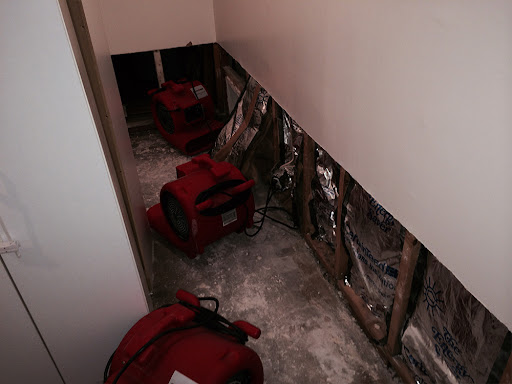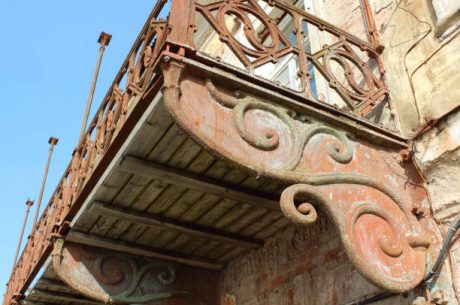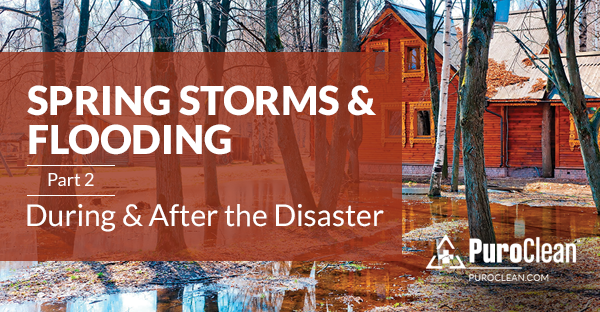Water damage is any destruction caused when unwanted water intrudes into a building. It’s more than just a puddle—it can seep into foundations, destroy walls, warp flooring, and create the perfect breeding ground for mold.
Whether it’s a slow leak under your sink or a full-blown basement flood, water damage has one goal: to destroy your space silently and systematically.
How It Affects Homes and Businesses
Water damage doesn’t discriminate. It weakens structural materials, rots wood, corrodes steel, and ruins furnishings. For homeowners, that means costly repairs. For business owners, it can mean closing shop and losing revenue.
Categories and Classes of Water Damage
Category 1 – Clean Water: Comes from a clean source like a broken pipe or overflowing sink.
Category 2 – Gray Water: Slightly contaminated—might come from washing machines, showers, or dishwashers.
Category 3 – Black Water: Grossly contaminated—includes sewage and floodwater.
Classes of water damage determine how much of the property is affected and how deeply the water has penetrated materials like walls, insulation, or flooring.
The True Cost of Water Damage
Structural Deterioration
Water weakens your home’s bones—literally. Over time, walls sag, wood warps, and floors buckle.
Mold Infestation
Mold loves moisture and can begin growing within 24 hours of exposure. This isn’t just a smell issue—it’s a health hazard.
Health Hazards
Water damage can create airborne toxins and increase allergens, impacting respiratory health and even causing infections.
Financial and Insurance Impacts
Without proper restoration, water damage can result in denied insurance claims, higher premiums, and long-term financial loss.

Why Water Damage Should Never Be Ignored
The 48-Hour Rule
If water isn’t extracted and dried within 48 hours, mold spores activate. That gives you a narrow window to act.
Hidden Moisture Zones
Moisture can hide behind walls, under floors, and inside your HVAC system. If left untreated, the damage continues unnoticed.
Secondary Damage Escalation
Even if things “look dry,” moisture can rot wood and encourage microbial growth behind surfaces.
What Is Water Damage Restoration?
Water damage restoration is a strategic, multi-step process that removes water, dries out the space, disinfects it, and restores it to its original state.
It’s not just drying—it’s science-backed remediation that ensures no hidden problems are left behind.
Water Mitigation vs. Water Restoration
Mitigation = stopping the water and minimizing damage.
Restoration = bringing your home back to livable, safe conditions.
Step-by-Step Water Damage Restoration Process
1. Emergency Contact
Available 24/7, restoration teams should be your first call—not your plumber, not your neighbor.
2. Detailed Inspection and Assessment
Professionals identify the water source, contamination level, and affected areas with moisture meters and thermal imaging.
3. Water Extraction
Using high-powered vacuums and pumps, pros remove standing water fast to stop the spread.
4. Structural Drying and Dehumidification
Industrial air movers and dehumidifiers are deployed to remove hidden moisture.
5. Cleaning, Disinfection, and Odor Removal
From carpets to baseboards, all surfaces are sanitized. Odors are neutralized—not just masked.
6. Restoration and Repairs
This may involve replacing drywall, painting walls, or installing new flooring—whatever it takes to get back to normal.
How Water Damage Affects Your Property Value
- Decreased Market Appeal: Buyers are wary of water-damaged properties.
- Appraisal Red Flags: Inspectors spot signs of mold, rot, or warped floors.
- Long-Term Resale Risks: Even past damage that’s not properly documented or restored can lower your property’s value.
Health Dangers from Water Damage
- Mold Exposure: Linked to asthma, skin rashes, and severe allergic reactions.
- Bacteria Growth: Especially in black water cases, harmful pathogens can thrive.
- Air Quality Drop: Humid, musty environments contribute to poor breathing conditions.
Why Professional Restoration Is Non-Negotiable
Risks of DIY Cleanups
Missing moisture or failing to disinfect properly will almost always come back to haunt you—literally, in the form of mold.
Equipment and Expertise Required
Restoration pros use:
- Moisture detectors
- Infrared cameras
- Commercial-grade air movers and dehumidifiers
Certified Restoration Matters
Look for firms certified by the IICRC (Institute of Inspection Cleaning and Restoration Certification). This means they follow best practices and safety guidelines.
Choosing the Right Water Damage Restoration Company
What to Look For
- 24/7 emergency response
- Licensed and insured technicians
- Transparent estimates
- IICRC certification
Red Flags to Avoid
- No clear process
- Lack of reviews
- Pushy sales tactics
- No insurance support
Does Insurance Cover Water Damage Restoration?
What’s Covered and What’s Not
Typically covered:
- Sudden pipe bursts
- Appliance leaks
- Roof leaks after storms
Not covered:
- Long-term pipe corrosion
- Poor maintenance
- Floods (unless you have flood insurance)
How Restoration Supports Your Claim
Most professional companies provide:
- Detailed damage reports
- Photos for documentation
- Direct communication with insurers
How to Prevent Future Water Damage
- Seasonal Gutter Cleaning
- Install a Sump Pump in Your Basement
- Regular Plumbing Inspections
- Waterproof Window Seals
- Install Leak Detectors and Water Alarms
Conclusion
Water damage is one of the most destructive and costly events your property can face—but it doesn’t have to be a disaster. With prompt, professional restoration, you can stop damage in its tracks and protect what matters most.
It’s not just about drying your space—it’s about restoring your peace of mind.
FAQs
1. How quickly should I respond to water damage?
Immediately—within the first 24 to 48 hours—to prevent mold and secondary damage.
2. What’s the difference between water damage and flood damage?
Flood damage usually comes from natural sources and requires separate insurance; water damage often involves internal sources.
3. Can I clean up water damage myself?
You can try, but without professional tools and training, it’s nearly impossible to detect hidden moisture.
4. How long does water damage restoration take?
It varies—small jobs can take a few days, larger ones up to several weeks.
5. Is mold guaranteed after water damage?
No, but the risk is high if moisture isn’t removed within 48 hours.



